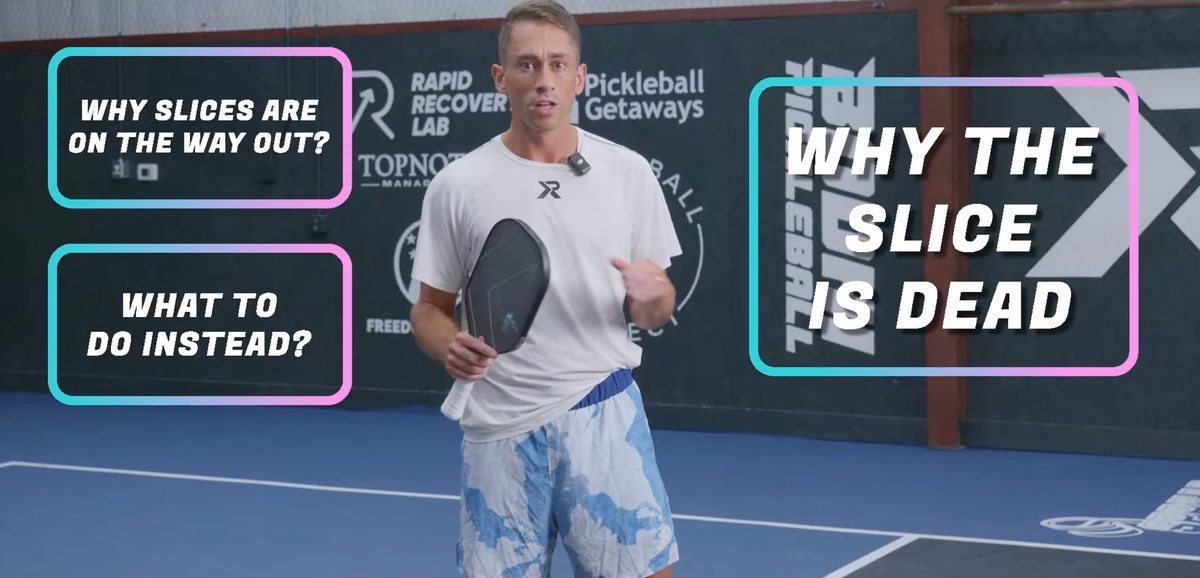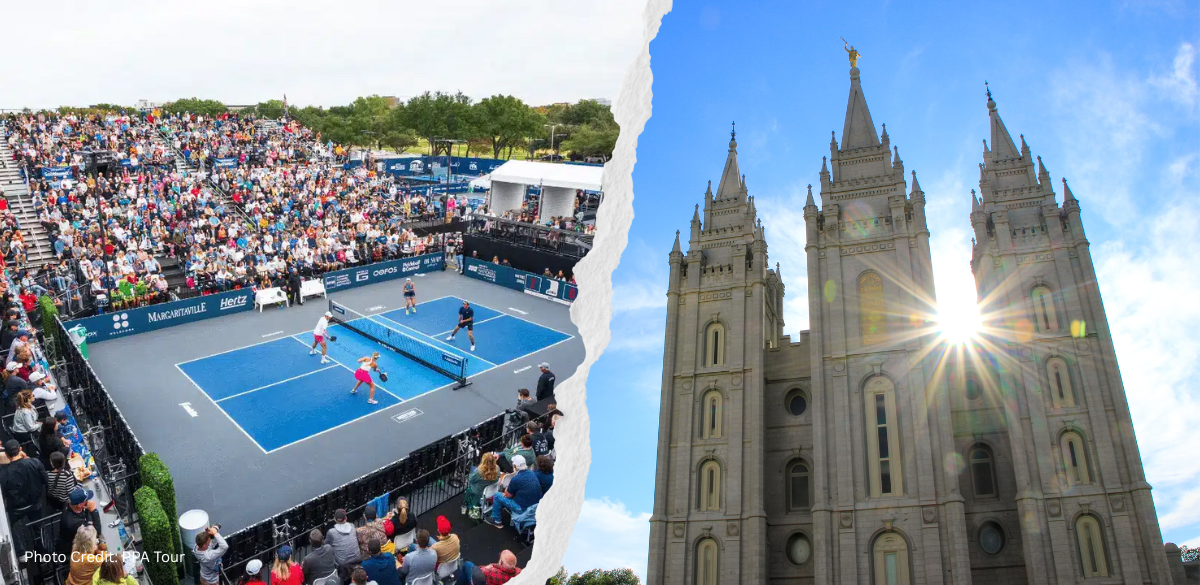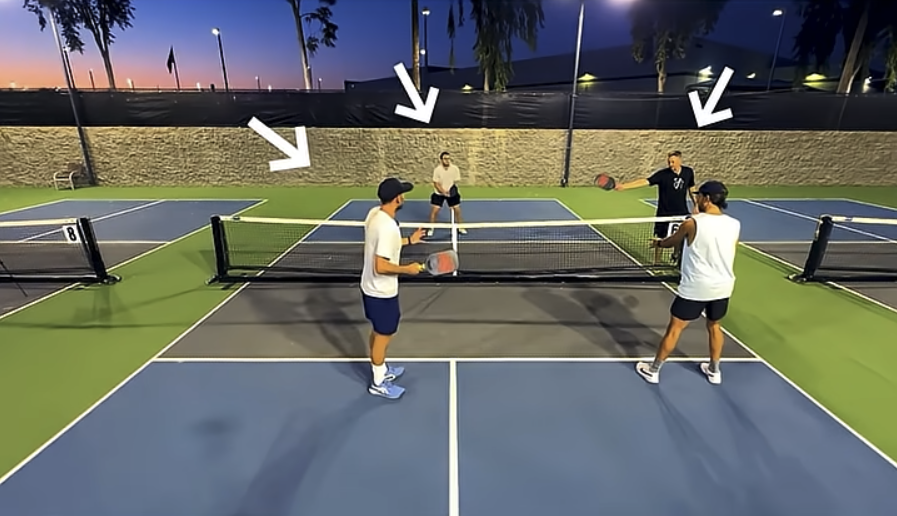Effective pickleball strategy isn't always about hitting winners or executing perfect shots. Sometimes it's about making smart decisions that put your opponents in uncomfortable situations.
When your opponents are hunting you down, applying relentless pressure, and forcing you into uncomfortable positions, what's your move?
Most recreational players panic. They rush their shots, make unforced errors, and hand the point away on a silver platter.But there's a better way, and Selkirk TV just laid it out in their latest instructional video.
The channel's latest breakdown on resisting pressure in pickleball offers a refreshingly practical approach to defense. Rather than getting caught up in flashy techniques or complicated footwork patterns, the focus here is on something more fundamental: understanding that pressure is a two-way street.
Your opponents want to make things difficult for you, sure, but you've got tools at your disposal to flip the script.
1. The Art of Buying Yourself Time
Here's the thing about pressure in pickleball: it thrives on speed and urgency.
When your opponents are hitting hard and fast, they're banking on you making a rushed decision. So the first defensive principle Selkirk's coach emphasizes is straightforward but effective: buy yourself more time to react.
- One way to do this is by hitting the ball high into the air. Yeah, it sounds simple, almost too simple. But there's real strategy here. When you loft the ball upward, or lob it, you're giving yourself and your partner precious seconds to reposition. You're resetting the court geometry.
It's not the most aggressive play, but sometimes defense isn't about aggression. It's about survival and repositioning.
- Another approach is hitting a low and slow ball. This one requires a bit more finesse because you're not just lobbing it; you're controlling the pace and trajectory. A low, slow ball takes longer to travel over the net and reach your opponents.
It's the pickleball equivalent of a boxer clinching when they're getting outboxed. You're not winning the exchange, but you're preventing a knockout.
7 Tactical Tips for Playing Pickleball With a Weaker Partner
Pickleball is special because players of all skill levels can play a game and still have fun. But when you’re paired with a weaker partner, you’ll need to adapt to keep things competitive.
 The Dink PickleballEric Roddy
The Dink PickleballEric Roddy

2. Targeting Weaknesses: The Backhand Advantage
Resisting pressure isn't just about time management. It's also about being smart with your shot selection. And one of the oldest principles in racquet sports applies here: attack the backhand.
For many players, their weakness is their backhand. Not everyone has a reliable two-handed backhand, and even those who do often prefer their forehand. By consistently targeting the backhand side, you're forcing your opponents into uncomfortable positions.
- They can't attack as aggressively from their backhand.
- They're more likely to make errors.
- The pressure they were applying to you starts to dissipate because they're now dealing with their own technical limitations.
This isn't about being cute or clever. It's about understanding your opponents' game and exploiting what you know.
- If one player has a weaker backhand than the other, that's your target.
- If one player struggles with high balls, keep them high.
The beauty of this approach is that it's repeatable and sustainable. You're not relying on luck or hoping for a mistake. You're systematically putting your opponents in positions where they're less comfortable.
Heads up: hundreds of thousands of pickleballers read our free newsletter. Subscribe here for cutting edge strategy, insider news, pro analysis, the latest product innovations and more.
3. The Power of Isolation
Here's something that separates good defensive players from great ones: knowing when to isolate. Selkirk's coach makes a crucial point about this.
If one of your opponents is constantly putting you under pressure, getting the ball away from them is a really important strategy.Think about it. In doubles pickleball, you're not playing against two identical players.
- One might be more aggressive.
- One might have better court positioning.
- One might be the primary attacker.
When you identify that player, you have a choice: you can either try to neutralize them, or you can avoid them entirely. The latter is often the smarter play when you're under pressure.
By hitting to the other player, you're essentially saying, "I'm not going to engage with your best player right now." You're buying time, resetting the rally, and forcing a different dynamic. The weaker player might not be able to capitalize on the opportunity. They might hit a weaker shot. They might miss entirely. Suddenly, the pressure that was suffocating you a moment ago has evaporated.
Why Professional Pickleball Players Abandoned the Slice Shot in 2025
The slice didn’t die because it was a bad shot. It’s gone extinct because the game has evolved to favor the fast pace facilitated by topspin.
 The Dink PickleballThe Dink Media Team
The Dink PickleballThe Dink Media Team

Effective pickleball strategy isn't always about hitting winners or executing perfect shots. Sometimes it's about making smart decisions that put your opponents in uncomfortable situations.
Putting It All Together
When you're under pressure, you don't need to be a hero. You don't need to hit a winner or pull off some incredible shot. You need to be smart, patient, and strategic.
- Buy yourself time.
- Target weaknesses.
- Isolate the weaker opponent.
These aren't revolutionary concepts, but they're often overlooked by recreational players who are focused on hitting harder or faster.
The reality is that defense in pickleball is about making good decisions under pressure. It's about understanding that you have agency in the rally, even when your opponents are attacking.
Anuncie Aqui / Advertise Here
Sua marca para o mundo Pickleball! / Your brand for the Pickleball world!

 English
English  Spanish
Spanish  Portuguese
Portuguese  German
German  Italian
Italian  Japanese
Japanese  French
French  Polish
Polish  Russian
Russian  Netherlands
Netherlands  Hungarian
Hungarian  Turkish
Turkish  Videos
Videos 








 English (US) ·
English (US) ·  Portuguese (BR) ·
Portuguese (BR) ·